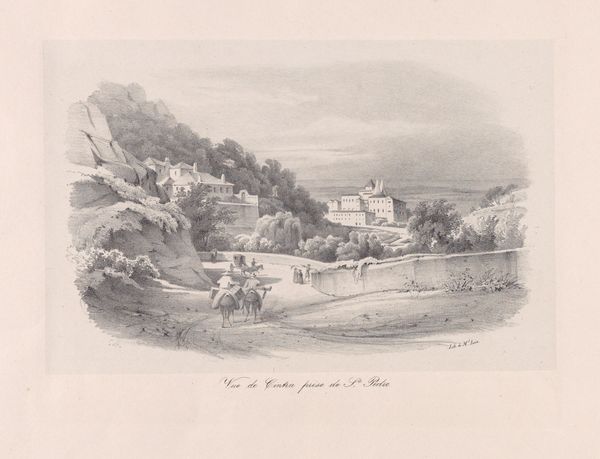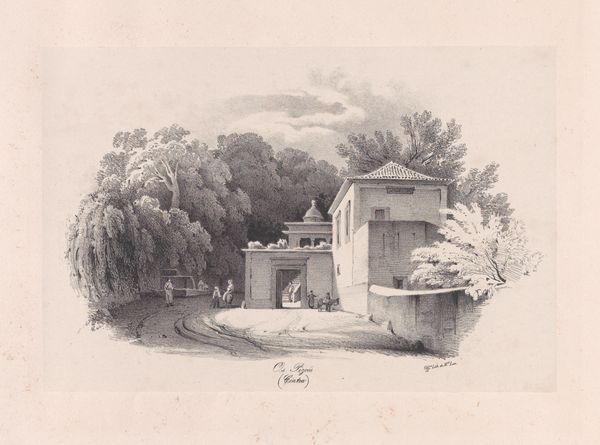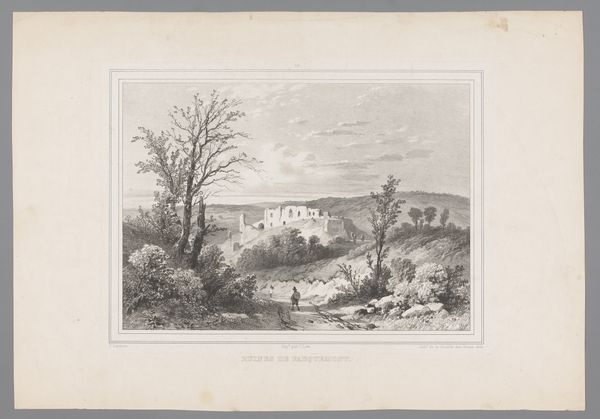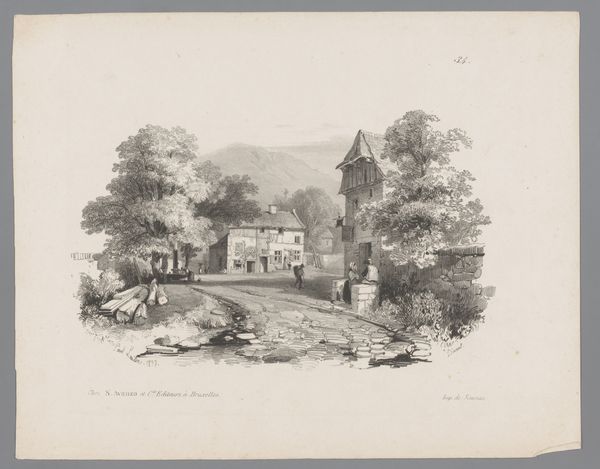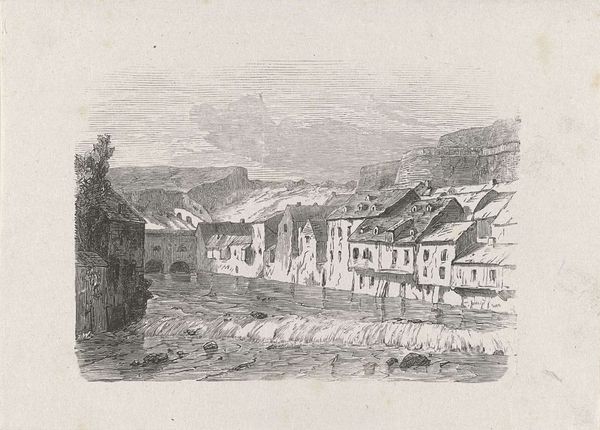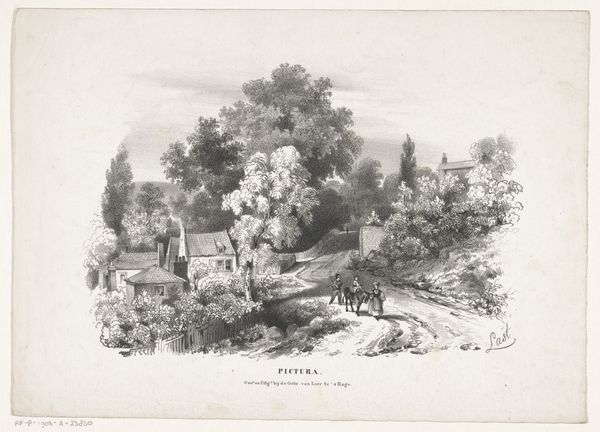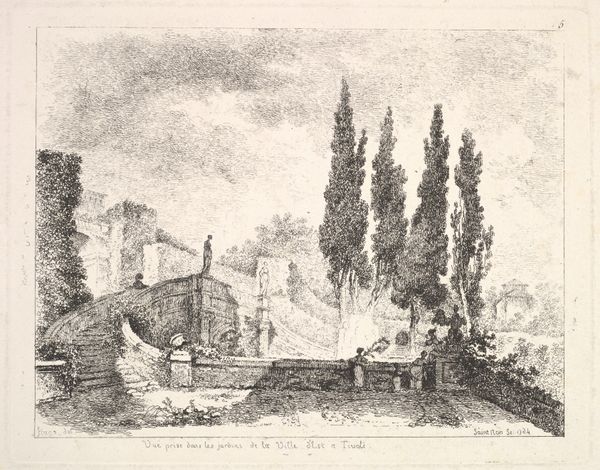
View of Sintra with what is now the National Palace in the background 1840
0:00
0:00
drawing, print, engraving
#
drawing
# print
#
landscape
#
romanticism
#
engraving
Dimensions: Sheet: 13 3/8 × 20 7/8 in. (34 × 53 cm) Sheet (Sheet with image): 9 1/16 × 11 13/16 in. (23 × 30 cm)
Copyright: Public Domain
Clementine de Brelaz created this print of Sintra in the 19th century, using a technique called lithography. It's a method that relies on the properties of oil and water to transfer an image from a stone or metal plate to paper. Think of it: the artist would have meticulously drawn this scene of the National Palace onto a lithographic stone with a greasy crayon. The stone is then treated with chemicals, so that only the drawn areas attract ink. This printmaking process allowed for relatively quick reproduction, and played a vital role in disseminating imagery widely across society. Lithography democratized art by making images more accessible. It also provided employment for skilled artisans. Yet, while lithography made art more widespread, it also raised questions about originality and the role of the artist in a world of mechanical reproduction, and highlights our modern concerns of labor, and politics, and consumption. Appreciating the technique behind this print invites us to consider how art and industry intertwine.
Comments
No comments
Be the first to comment and join the conversation on the ultimate creative platform.


